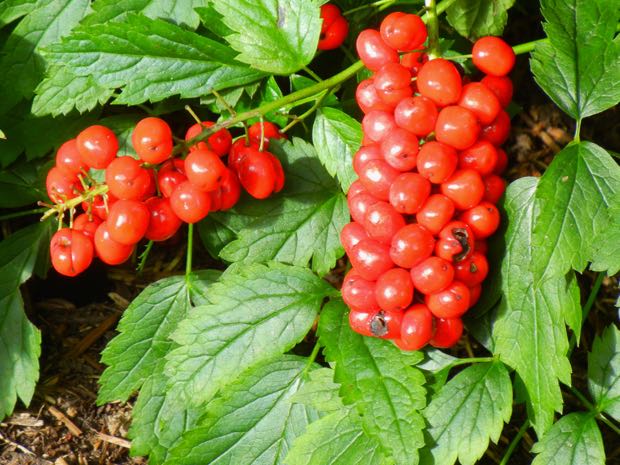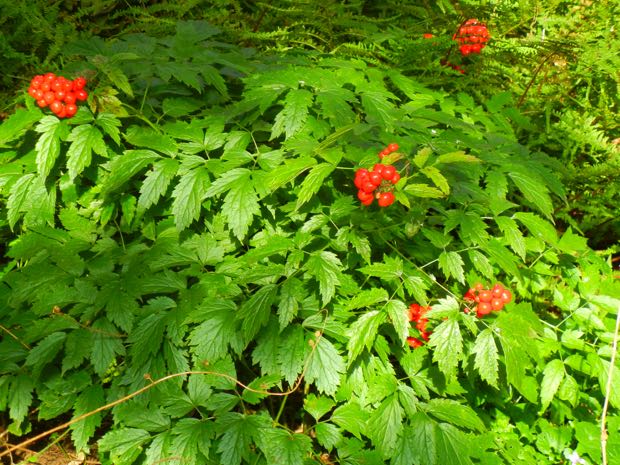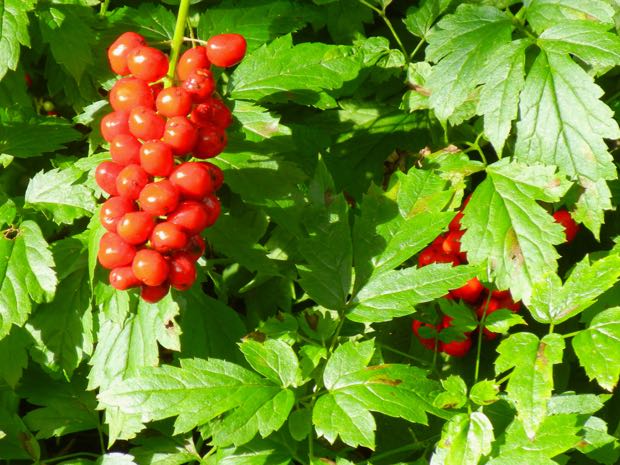Unveiling the Enigma of Red Baneberry: Cultivating and Appreciating Actaea rubra
Background: Actaea rubra, commonly known as Red Baneberry or Chinaberry, is an herbaceous plant belonging to the Ranunculaceae family. With its preference for shady areas and moist soils, Red Baneberry thrives in cool, woodland environments. The plant is a slow grower, requiring time to mature before it bursts into a spectacle of beautiful white flowers and vibrant red berries during late summer or early autumn.
Characteristics: Red Baneberry is characterized by its bushy growth, featuring large, highly divided leaves and compact clusters of small white flowers. The perennial stems, reaching heights of 1 to 3 feet, are adorned with two or three large compound leaves, each intricately divided into leaflets with serrated edges. Above the foliage, dense globular clusters of small white flowers captivate onlookers. As the seasons progress, these blossoms transform into eye-catching red berries, adding a touch of allure to the plant. However, it is important to note that all parts of Red Baneberry are highly poisonous, including the berries.
Deadheading: To encourage prolonged flowering and maintain the plant’s aesthetic appeal, consider deadheading the spent flowers of Red Baneberry. Removing faded flowers promptly prevents seed formation and redirects the plant’s energy toward producing new blooms. Use pruning shears or scissors to carefully cut off the faded flowers at the base of the stem or just above a healthy bud or leaf node.
Cultivation of Actaea rubra
Planting: When it comes to planting Red Baneberry (Actaea rubra), selecting the right location and providing optimal conditions are crucial for successful cultivation. Choose a spot that offers partial to full shade, mimicking the plant’s natural woodland habitat. The soil should be cool, moist, well-drained, and enriched with organic matter to enhance fertility. Before planting, amend the soil with compost or well-rotted manure to improve its structure and nutrient content. Adequate soil preparation will create an ideal environment for Red Baneberry to thrive.
Spacing: When planting Red Baneberry, it is essential to provide ample spacing to allow the plant to grow and spread comfortably. Space individual plants 18 to 24 inches apart to ensure they have enough room to develop and avoid overcrowding. Adequate spacing promotes good airflow, reduces the risk of diseases, and allows each plant to access sufficient light and nutrients.
Watering: Proper watering is crucial during the establishment phase and ongoing care of Red Baneberry. Initially, after planting, ensure regular watering to provide the young plants with adequate moisture. Focus on deep watering to reach the root zone effectively. As the plant matures, it becomes more tolerant of drought conditions, but it still benefits from occasional watering during dry spells. Monitor soil moisture levels and water as needed to keep the soil consistently moist but not waterlogged.
Fertilizing: Red Baneberry generally thrives in reasonably fertile soils, but supplemental fertilization can help ensure healthy growth and abundant flowering. Apply a balanced, slow-release fertilizer once a year in the spring. Choose a fertilizer formulation suitable for perennial plants and follow the package instructions for application rates. Applying a light layer of fertilizer around the base of each plant will provide the necessary nutrients to support Red Baneberry’s growth and development.
Powdery Mildew:
Red Baneberry may be susceptible to powdery mildew, a common fungal infection that appears as a white, powdery coating on the leaves. To prevent or treat powdery mildew, maintain good airflow around the plants by providing adequate spacing and avoiding overhead watering. If signs of powdery mildew appear, promptly apply a suitable fungicide according to the product instructions to control the spread of the infection and protect the plant’s health.
Pruning: While Red Baneberry does not require regular pruning, occasional pruning can benefit the plant’s overall health and appearance. In the fall, after the growing season has ended, consider cutting back the plant to the ground. This practice helps rejuvenate the plant, removes any diseased or damaged foliage, and prepares it for new growth in the following spring. Ensure you wear gloves when handling Red Baneberry, as all parts of the plant, including the foliage, stems, and berries, are toxic.
Propagation: Red Baneberry can be propagated through two primary methods: seed sowing and root division. Seeds can be sown outdoors at a depth of half an inch as soon as they ripen, but patience is required as germination may take up to a year. Alternatively, root division can be carried out in early spring or fall, ensuring the careful separation of plant sections for successful propagation.
Toxicity:
It is crucial to be aware of Red Baneberry’s toxic nature. All parts of the plant, particularly the berries, contain toxic compounds that can cause harm if ingested. Exercise caution when handling Red Baneberry, and avoid contact with open wounds or mucous membranes. If you have pets or small children, take measures to prevent their access to the plant to ensure their safety. If accidental ingestion occurs, seek medical assistance immediately.
With its captivating foliage, delicate flowers, and striking red berries, Red Baneberry serves as an excellent choice for enhancing cool, shaded gardens. Embrace the allure of Actaea rubra, but always handle this captivating plant with caution due to its toxicity.






